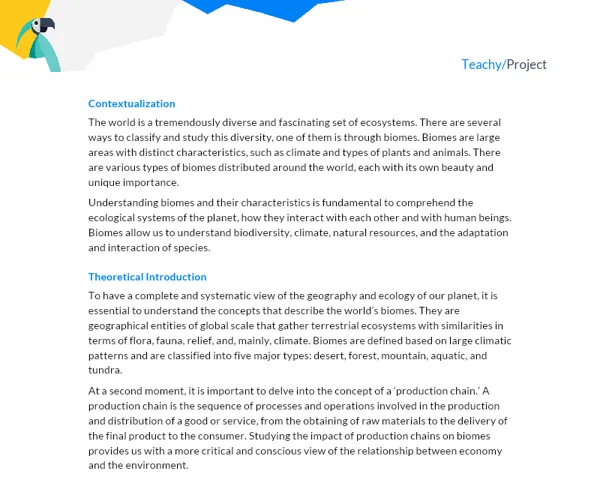Introduction
Hello, young explorers! Today, we are going on an exciting journey through 'Means of Transportation and Communication'. Did you know that the world is becoming increasingly interconnected? This is thanks to means of transportation, which allow us to move people and goods more quickly, and means of communication, which enable us to share ideas and information instantly, despite the distance that separates us.
Means of transportation are tools or forms of locomotion that allow the movement of people, animals, and goods from one place to another. They can be classified as terrestrial, such as roads and railways; aerial, such as airplanes and helicopters; and aquatic, such as boats and ships. Each means of transportation has its advantages and disadvantages, depending on the type of cargo, distance, and speed required.
On the other hand, means of communication are the tools we use to transmit information from one place to another. They not only allow us to talk to people who are far away but also to exchange ideas, learn new things, and even do business. Some examples of means of communication are the telephone, mail, television, radio, and, more recently, the Internet. Each means of communication has its own characteristics and uses, and together they form a complex and interconnected network.
Contextualization
Now, you must be wondering, why is it important to learn about means of transportation and communication? Well, these are two of the pillars of modern society. They allow us to travel, meet new people, exchange ideas and information, and even do business. Without them, the world would be a very different place!
Furthermore, means of transportation and communication have a huge impact on our planet. They consume large amounts of energy, cause pollution, and can even lead to the destruction of entire ecosystems. Therefore, it is crucial that we learn to use them responsibly and sustainably.
Finally, learning about means of transportation and communication can be a lot of fun! You will have the chance to explore different types of vehicles, from cars and trains to airplanes and rockets. And you will also discover how communication has evolved over time, from the first smoke signals and drums to the high-speed internet we use today.
So, are you ready for this incredible journey? Let's go!
Practical Activity
Activity Title: 'The Journey of Knowledge'
Project Objective:
- To know and understand the different means of transportation and communication.
- To understand the importance and impact of means of transportation and communication on society and the environment.
- To develop teamwork, time management, communication, and problem-solving skills.
Project Description:
In this project, you will be divided into groups of 3 to 5 students, and each group will be assigned to research and present on one means of transportation and one means of communication. You will create a multimedia presentation (can be in PowerPoint, Prezi, Google Slides, etc.) highlighting the characteristics, operation, advantages and disadvantages of each means, and its impact on society and the environment.
For example, one group may research 'Means of Transportation: Train' and 'Means of Communication: Radio'. They will explore how trains move, what they are used for, how they affect the environment, and also how the radio works, what it is used for, and how it affects society.
Additionally, each group should think of and present ideas on how these means of transportation and communication can be used more sustainably, that is, with less negative impact on the environment.
Required Materials:
- Internet access for research.
- Writing materials to jot down ideas and plan the presentation.
- Computer or similar device to create the multimedia presentation.
Step by Step:
-
Group Formation: Students will be divided into groups of 3 to 5. Each group will receive two topics: one means of transportation and one means of communication.
-
Research and Study: Each group should research and study the means of transportation and communication assigned to them. They should explore how they work, what they are used for, their advantages and disadvantages, and their impact on society and the environment.
-
Presentation Planning: After completing the research, the groups should plan the presentation. They should decide which information will be included, how the presentation will be organized, and who will be responsible for each part.
-
Creating the Presentation: Using a computer or similar device, the groups should create the multimedia presentation. They can use images, videos, and graphics to make the presentation more interesting and informative.
-
Presentation Practice: Before presenting to the class, the groups should practice the presentation together. They should make sure that all group members are comfortable with the material and know what they should say.
-
Presentation to the Class: Finally, the groups will present their research to the class. Each group will have about 10 to 15 minutes to present. After all presentations, there will be time for questions and discussion.
Remember, the presentation should be creative, engaging, and informative. You can use your imagination to make it more interesting! Good luck, explorers!

